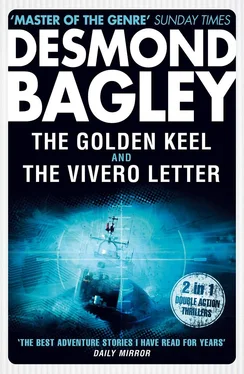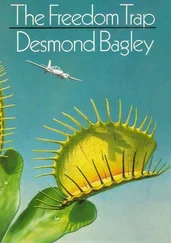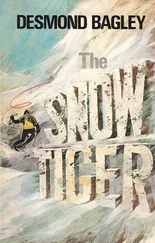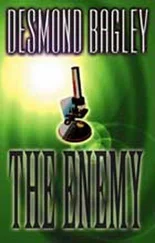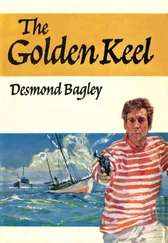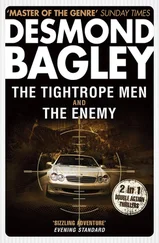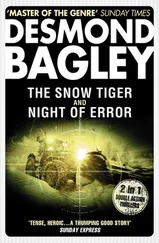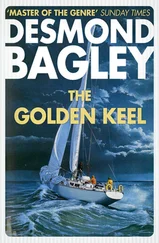DESMOND BAGLEY
The Golden Keel
AND
The Vivero Letter

This novel is entirely a work of fiction. The names, characters and incidents portrayed in it are the work of the author’s imagination. Any resemblance to actual persons, living or dead, events or localities is entirely coincidental.
Harper An imprint of HarperCollins Publishers Ltd. 1 London Bridge Street London SE1 9GF
www.harpercollins.co.uk
This omnibus edition 2009
The Golden Keel first published in Great Britain by Collins 1963 The Vivero Letter first published in Great Britain by Collins 1968 Postscript first published in Great Britain by Collins 1979
Copyright © Brockhurst Publications 1963, 1968, 1979
Desmond Bagley asserts the moral right to be identified as the author of these works
A catalogue record for this book is available from the British Library
All rights reserved under International and Pan-American Copyright Conventions. By payment of the required fees, you have been granted the nonexclusive, nontransferable right to access and read the text of this ebook on-screen. No part of this text may be reproduced, transmitted, downloaded, decompiled, reverse engineered, or stored in or introduced into any information storage and retrieval system, in any form or by any means, whether electronic or mechanical, now known or hereinafter invented, without the express written permission of HarperCollins ebooks
HarperCollins Publishers has made every reasonable effort to ensure that any picture content and written content in this ebook has been included or removed in accordance with the contractual and technological constraints in operation at the time of publication
Source ISBN: 9780007304776
Ebook Edition © SEPTEMBER 2013 ISBN: 9780007347643
Version: 2018-10-12
‘I’ve read all Bagley’s books and he’s marvellous, the best.’
ALISTAIR MACLEAN
Cover
Title Page
Copyright
Praise
The Golden Keel
Dedication
Book One: The Men
Chapter One: Walker
Chapter Two: Coertze
Book Two: The Gold
Chapter Three: Tangier
Chapter Four: Francesca
Chapter Five: The Tunnel
Chapter Six: Metcalfe
Chapter Seven: The Golden Keel
Book Three: The Sea
Chapter Eight: Calm and Storm
Chapter Nine: Sanford
The Vivero Letter
Dedication
Acknowledgements
Chapter One
Chapter Two
Chapter Three
Chapter Four
Chapter Five
Chapter Six
Chapter Seven
Chapter Eight
Chapter Nine
Chapter Ten
Chapter Eleven
Chapter Twelve
Keep Reading
Postscript
About the Author
By the Same Author
About the Publisher
THE GOLDEN KEEL
For Joan – who else?
BOOK ONE The Men
My name is Peter Halloran, but everyone calls me ‘Hal’ excepting my wife, Jean, who always called me Peter. Women seem to dislike nicknames for their menfolk. Like a lot of others I emigrated to the ‘colonies’ after the war, and I travelled from England to South Africa by road, across the Sahara and through the Congo. It was a pretty rough trip, but that’s another story; it’s enough to say that I arrived in Cape Town in 1948 with no job and precious little money.
During my first week in Cape Town I answered several of the Sit. Vac. advertisements which appeared in the Cape Times and while waiting for answers I explored my environment. On this particular morning I had visited the docks and finally found myself near the yacht basin.
I was leaning over the rail looking at the boats when a voice behind me said, ‘If you had your choice, which would it be?’
I turned and encountered the twinkling eyes of an elderly man, tall, with stooped shoulders and grey hair. He had a brown, weather-beaten face and gnarled hands, and I estimated his age at about sixty.
I pointed to one of the boats. ‘I think I’d pick that one,’ I said. ‘She’s big enough to be of use, but not too big for single-handed sailing.’
He seemed pleased. ‘That’s Gracia ,’ he said. ‘I built her.’
‘She looks a good boat,’ I said. ‘She’s got nice lines.’
We talked for a while about boats. He said that he had a boatyard a little way outside Cape Town towards Milnerton, and that he specialized in building the fishing boats used by the Malay fishermen. I’d noticed these already; sturdy unlovely craft with high bows and a wheelhouse stuck on top like a chicken-coop, but they looked very seaworthy. Gracia was only the second yacht he had built.
‘There’ll be a boom now the war’s over,’ he predicted. ‘People will have money in their pockets, and they’ll go in for yachting. I’d like to expand my activities in that direction.’
Presently he looked at his watch and nodded towards the yacht club. ‘Let’s go in and have a coffee,’ he suggested.
I hesitated. ‘I’m not a member.’
‘I am,’ he said. ‘Be my guest.’
So we went into the club house and sat in the lounge overlooking the yacht basin and he ordered coffee. ‘By the way, my name’s Tom Sanford.’
‘I’m Peter Halloran.’
‘You’re English,’ he said. ‘Been out here long?’
I smiled. ‘Three days.’
‘I’ve been out just a bit longer – since 1910.’ He sipped his coffee and regarded me thoughtfully. ‘You seem to know a bit about boats.’
‘I’ve been around them all my life,’ I said. ‘My father had a boatyard on the east coast, quite close to Hull. We built fishing boats, too, until the war.’
‘And then?’
‘Then the yard went on to contract work for the Admiralty,’ I said. ‘We built harbour defence launches and things like that – we weren’t geared to handle anything bigger.’ I shrugged. ‘Then there was an air-raid.’
‘That’s bad,’ said Tom. ‘Was everything destroyed?’
‘Everything,’ I said flatly. ‘My people had a house next to the yard – that went, too. My parents and my elder brother were killed.’
‘Christ!’ said Tom gently. ‘That’s very bad. How old were you?’
‘Seventeen,’ I said. ‘I went to live with an aunt in Hatfield; that’s when I started to work for de Havilland – building Mosquitos. It’s a wooden aeroplane and they wanted people who could work in wood. All I was doing, as far as I was concerned, was filling in time until I could join the Army.’
His interest sharpened. ‘You know, that’s the coming thing – the new methods developed by de Havilland. That hot-moulding process of theirs – d’you think it could be used in boat-building?’
I thought about it. ‘I don’t see why not – it’s very strong. We did repair work at Hatfield, as well as new construction, and I saw what happens to that type of fabric when it’s been hit very hard. It would be more expensive than the traditional methods, though, unless you were mass-producing.’
‘I was thinking about yachts,’ said Tom slowly. ‘You must tell me more about it sometime.’ He smiled. ‘What else do you know about boats?’
I grinned. ‘I once thought I’d like to be a designer,’ I said. ‘When I was a kid – about fifteen – I designed and built my own racing dinghy.’
‘Win any races?’
Читать дальше
